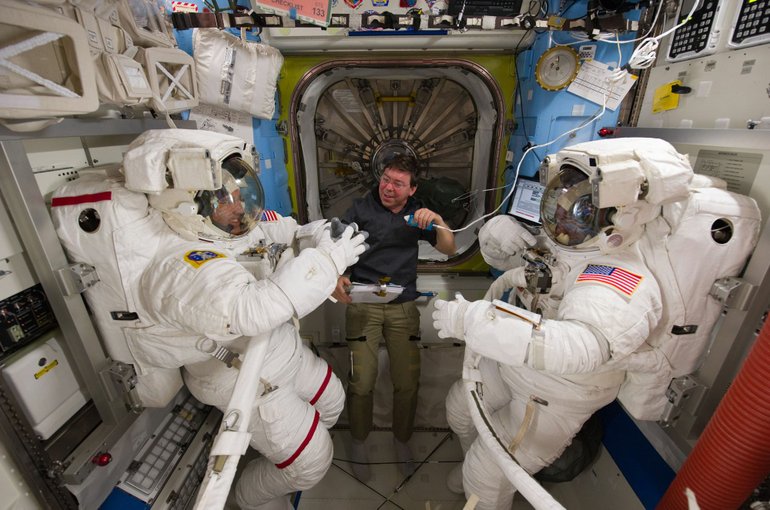Astronaut Mike Barratt won’t just be sending his best wishes up with the Endeavour shuttle crew when it heads for the International Space Station this morning.
The Camas native also is sending along some advice. It’s part of what’s been a busy couple of months for Barratt and his Discovery crew mates since their March 9 return to Earth.
“I’ve been busier since we came back than I was before the launch,” said Barratt, who was a mission specialist on shuttle flight 133. “We flew it, we were successful, and I thought we could relax — not true.”
One high-priority task was consulting with the crew of shuttle flight 134. The Endeavour mission is scheduled to launch at about 6 a.m. Pacific time today.
“We spent time preparing the 134 crew. We’ve talked over some operational points — the state of the station, how the air lock worked, how the robotic arm worked,” Barratt said in a recent telephone interview with The Columbian.
“The ‘134’ guys are doing four space walks. We have the freshest information on the air lock” the astronauts use to exit the space station, he said.
The International Space Station also recently added a cupola — a seven-window observation dome with a panoramic view.
“We have a new workstation in the cupola,” said Barratt, whose tasks included operating a 60-foot-long robotic arm mounted outside the space station.
“When you get in that thing, and control the arm from the workstation there, it’s an amazing place to operate,” he said.
“We were only the second visiting crew to use it,” he said.
A much better view
There are some differences between viewing something on a video monitor and looking through a window and actually watching the robotic arm at work.
There are other working conditions that you only get in space, like “Anticipating when the sun goes down or comes up,” he said. “In a second, it can be absolutely blinding. You must anticipate it.”
Another visual effect can take some getting used to. As an astronaut’s eyes track along the robotic arm, the perspective shifts from just looking out the window “to nearly infinity at the end of the 60-foot arm,” he said.
They two crews also discussed “the nuts and bolts of transferring hundreds of pounds of stuff back and forth,” he said.
NASA is planning to send just one more shuttle to the space station after Endeavour, so there is a lot of hauling to be done — both ways.
“We’re getting it stocked as much as we can. And, we’re getting things off” the space station, Barratt said. “A big problem is getting rid of stuff.”
Upon their return, members of the Discovery crew also had extensive debriefings, wrote reports and analyzed photographs taken from orbit.
“That’s all with a backdrop of projects assigned to you that were waiting when you got back,” he said.
Barratt is a physician who got into NASA as a flight surgeon. He’s been sharing his experiences with medical colleagues, and said there might be an academic position in his future.
“I am looking at that as a possibility,” he said. “I lecture to residents in military and civilian space medicine programs. There are a few opportunities that would allow me to work in space medicine and keep my ties with NASA.”
However, Barratt noted, “I’m not quite ready for that yet.”
With NASA closing down the shuttle program, opportunities for future launches will be in short supply. Until other options develop, NASA will have to pay Russia for a seat in its three-person Soyuz capsule.
‘Very blessed’
Barratt already has made two trips to the space station. Before his recent 13-day shuttle mission, Barratt launched in a Russian Soyuz capsule on March 26, 2009, for a 199-day mission.
“I’ve done one long flight and one short flight. I’ve been very blessed,” he said.
While he said he hopes to fly in space again, the 52-year-old Barratt acknowledged that younger astronauts are awaiting their turns.
“We work very hard preparing younger folks to fly,” he said. “The classes, over the last several cycles, are smaller and more focused on long-duration flights.”
Twenty years ago, he said, NASA tended to tap candidates with backgrounds as pilots and test pilots.
“Now we’re truly choosing people who are multifaceted, flexible people,” he said.
And drawing a parallel with a space mission, Barratt added: “You’d want to go camping with them for six months in a tiny tent.”
Tom Vogt: 360-735-4558; tom.vogt@columbian.com.




